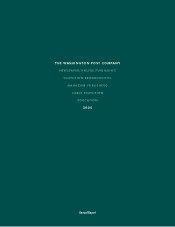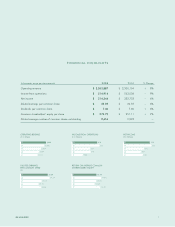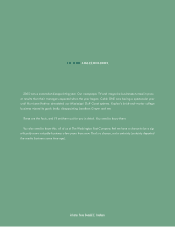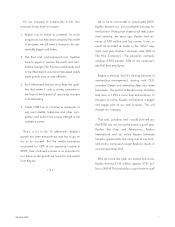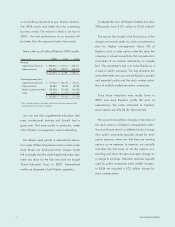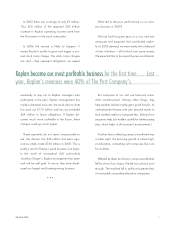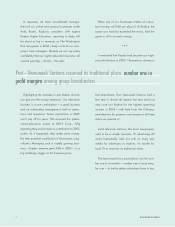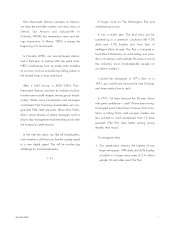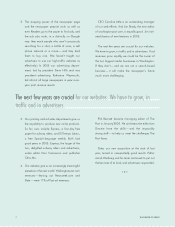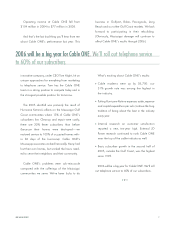Washington Post 2005 Annual Report Download - page 10
Download and view the complete annual report
Please find page 10 of the 2005 Washington Post annual report below. You can navigate through the pages in the report by either clicking on the pages listed below, or by using the keyword search tool below to find specific information within the annual report.
THE WASHINGTON POST COMPANY
8
2. The stopping power of the newspaper page
and the newspaper preprint work as well as
ever. Readers go to the paper to find ads, and
the ads also work, in a distinctly un-Google
way: they reach people who aren’t consciously
searching for a shirt, a bottle of wine, a cell
phone network or a movie — and they lead
them to buy one. (We haven’t taught our
advertisers to use our high-traffic websites as
effectively.) In 2005 our advertising depart-
ment, led by president Steve Hills and vice
president– advertising Katharine Weymouth,
led almost all large newspapers in year-over-
year print revenue results.
3. Our printing and ad sales departments give us
the capability to produce new niche products.
So far, ours include Express, a five-day free
paper for subway riders, and El Tiempo Latino,
afree Spanish-language weekly. Both had
good years in 2005. Express, the larger of the
two, delighted subway riders and advertisers,
under editor Dan Caccavaro and publisher
Chris Ma.
4. Our websites give us an increasingly meaningful
presence in the new world. Washingtonpost.com
revenues — leaving out Newsweek.com and
Slate — were 11% of Post ad revenues.
CEO Caroline Little is an outstanding manager
of our web efforts. And Jim Brady, the new editor
of washingtonpost.com, is equally good. Jim initi-
ated dozens of new features in 2005.
The next few years are crucial for our websites.
We have to grow, in traffic and in advertisers. If ad
revenues grow rapidly, we could be the owner of
the two biggest media businesses in Washington.
If they don’t — and we are not a search-based
business — it will make the newspaper’s future
much more challenging.
Phil Bennett became managing editor of The
Post in January 2005. He and executive editor Len
Downie have the skills — and the impossibly
strong staff — to help us meet the challenges The
Post faces.
Slate, our new acquisition at the start of last
year, turned in unexpectedly good results. Editor
Jacob Weisberg and his team continued to put out
the best site of its kind, and advertisers responded.
▼▼▼
The next few years are crucial for our websites. We have to grow, in
traffic and in advertisers.

